Stalin is out, Genghis Khan is in as Mongolia reclaims past
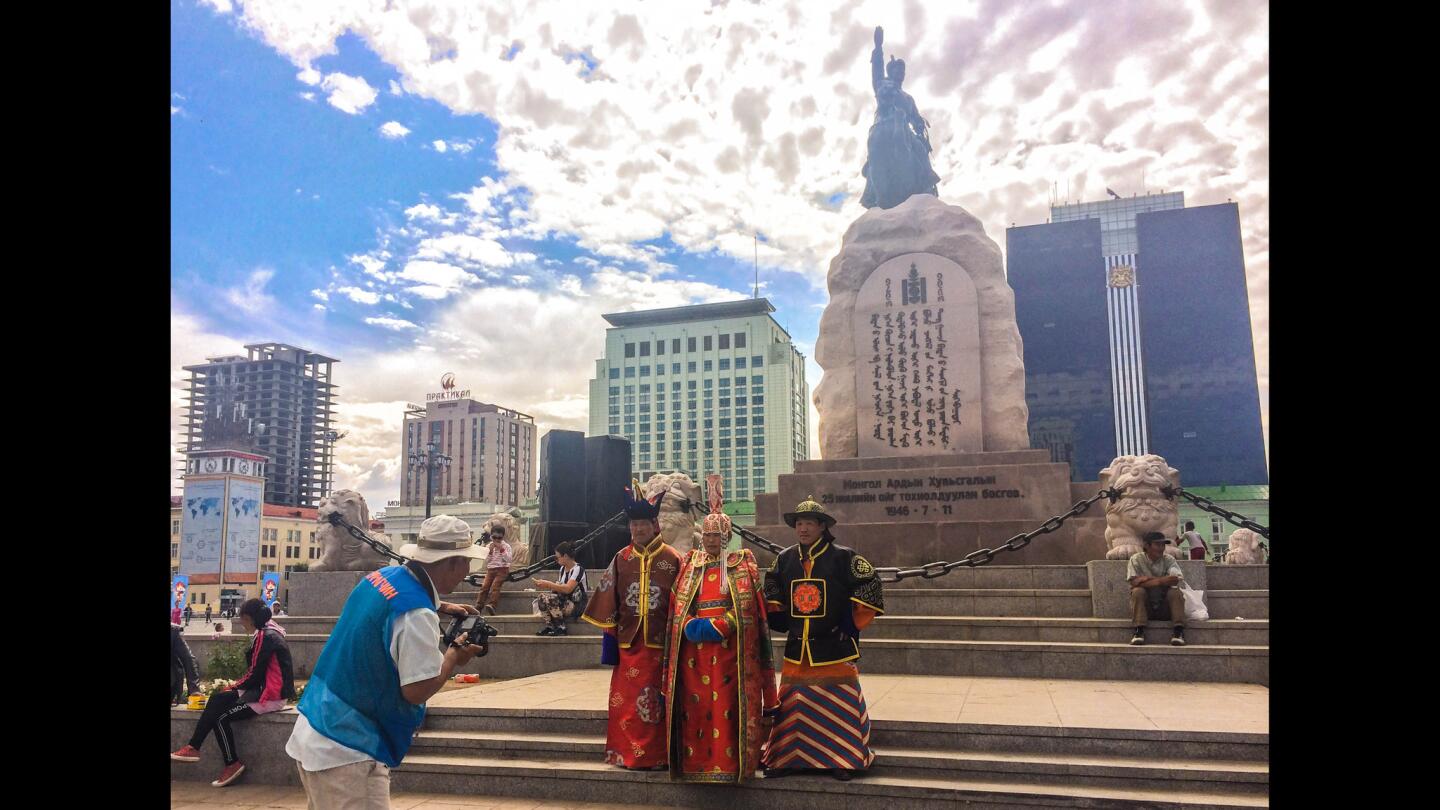
Mongolians rent traditional costumes and pose in front of the main monument in Ulan Bator’s central square, which depicts Damdiny Sukhbaatar (1893-1923), a key leader of the 1921 revolution. The inscription reads, in classical Mongolian: “Our nation, once in unity joined, our strengths combined and in resolve forward stepped, shall see no destination unreachable, no things unknown or unattainable, and will reach the pinnacle of happiness, which is only up to our own resolute will.”
(Julie Makinen / Los Angeles Times)After spending centuries under the thumb of China and seven decades as an atheistic Soviet satellite, Mongolia became a democratic state in 1990. In the quarter-century since, the nation has been on a mission to reclaim and redefine its identity and re-evaluate its history. Perhaps nowhere is this quest more evident than in the flurry of statue building – and tearing-down – that has erupted in recent years. Buddhas, the Beatles and Genghis Khan are in. Stalin and Lenin are most definitely out.
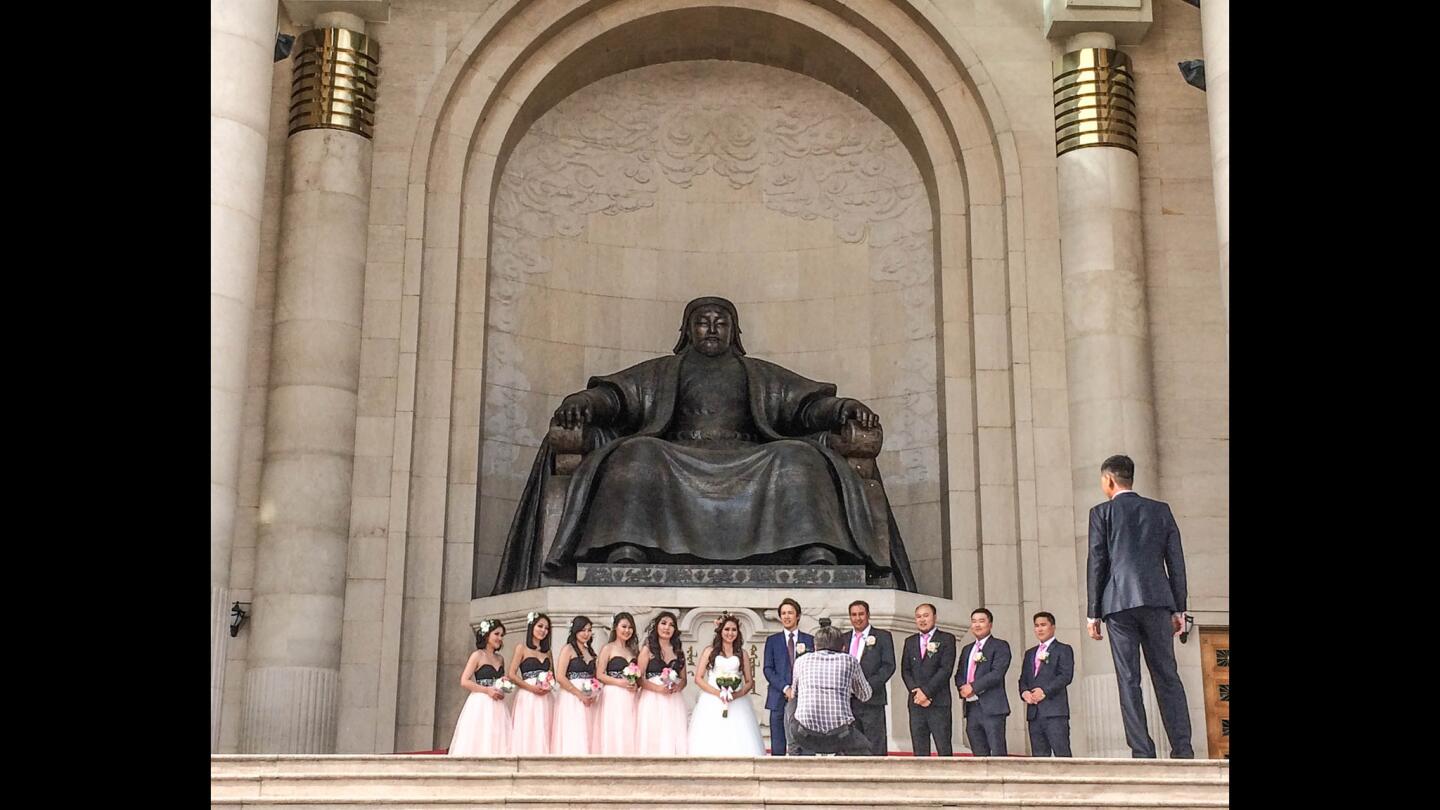
A wedding party takes a photograph in front of the giant Genghis Khan statue in front of the Parliament building in Ulan Bator’s central square. The Genghis Khan Memorial Complex, an extension of the parliament building, was opened in 2006 for the 800th anniversary of the Mongolian Empire.
(Julie Makinen / Los Angeles Times)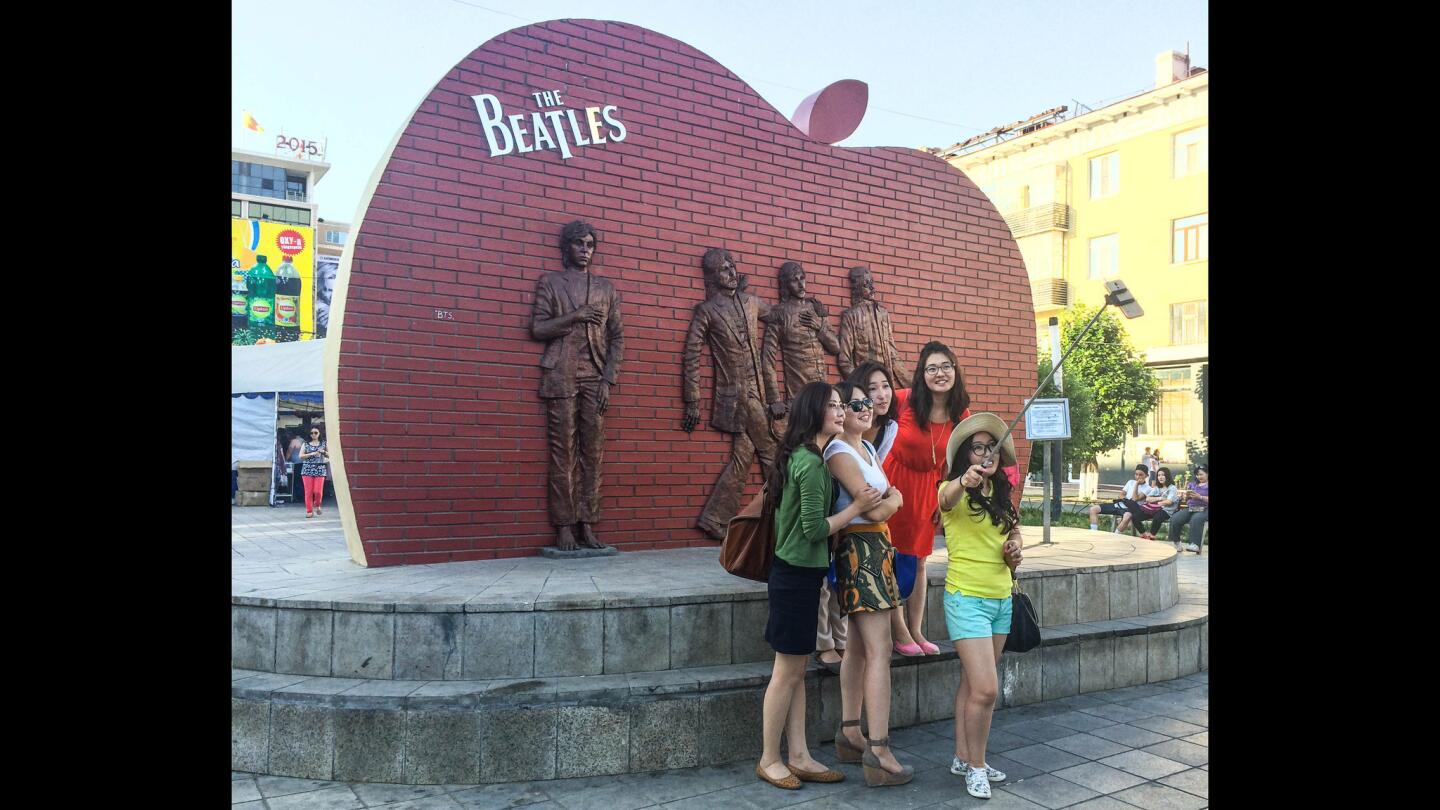
The bronze bas-relief Beatles Monument was erected in 2008 at the initiative of G. Gankhuu, soloist in the Mongolian “Shar Airag” band; designed by architect B. Denzen; and built entirely on donations by Beatles fans.
(Julie Makinen / Los Angeles Times)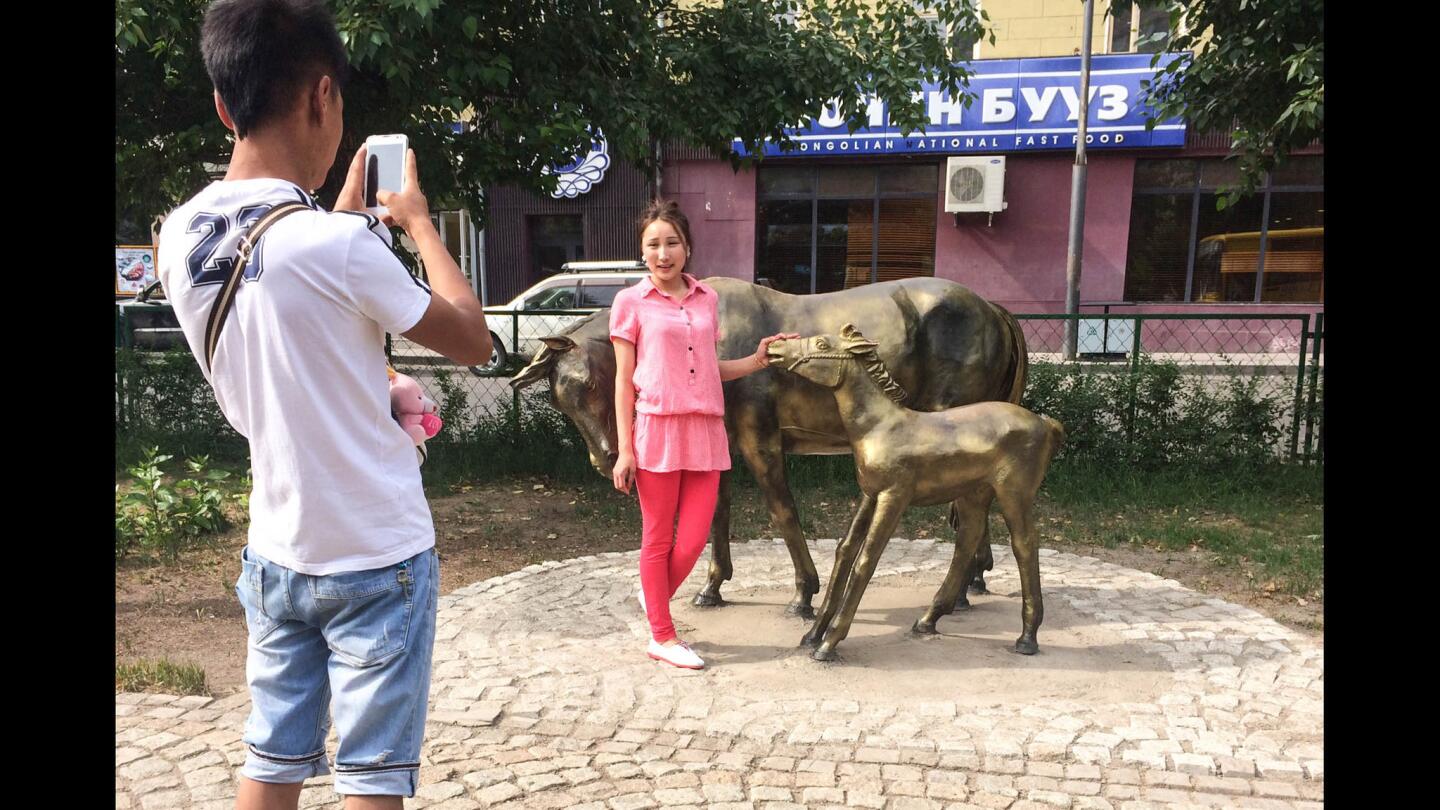
A couple takes a photo in front of a sculpture of horses in central Ulan Bator.
(Julie Makinen / Los Angeles Times)Advertisement
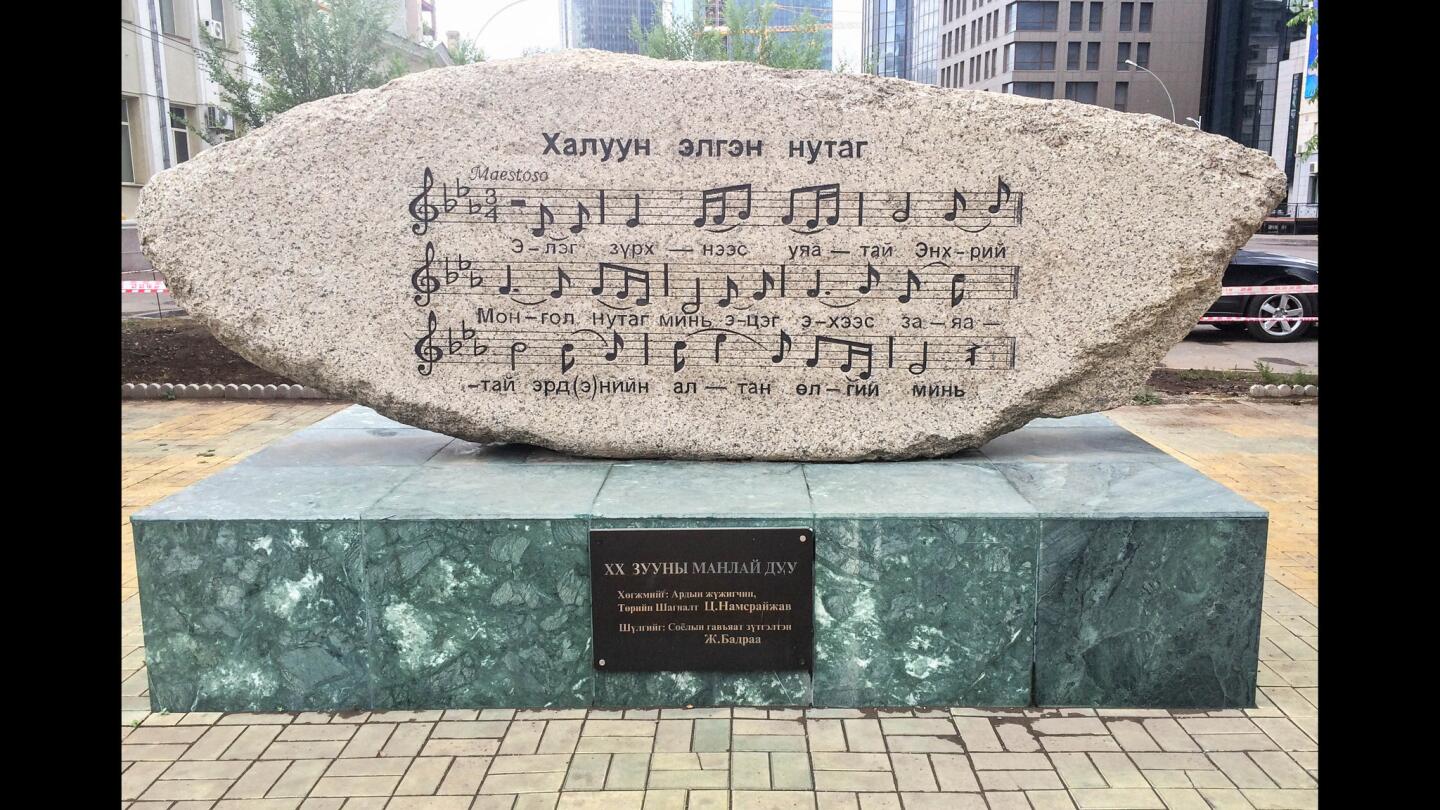
“My Adored Homeland” is the most recognized patriotic song in Mongolia, often called the “unofficial national anthem.” In 1999 a statue was designed to honor this, song with its first stanza and notes engraved on the piece of granite resembling the contours of the map of Mongolia. This is the city’s first (but not only) monument dedicated to a song.
(Julie Makinen / Los Angeles Times)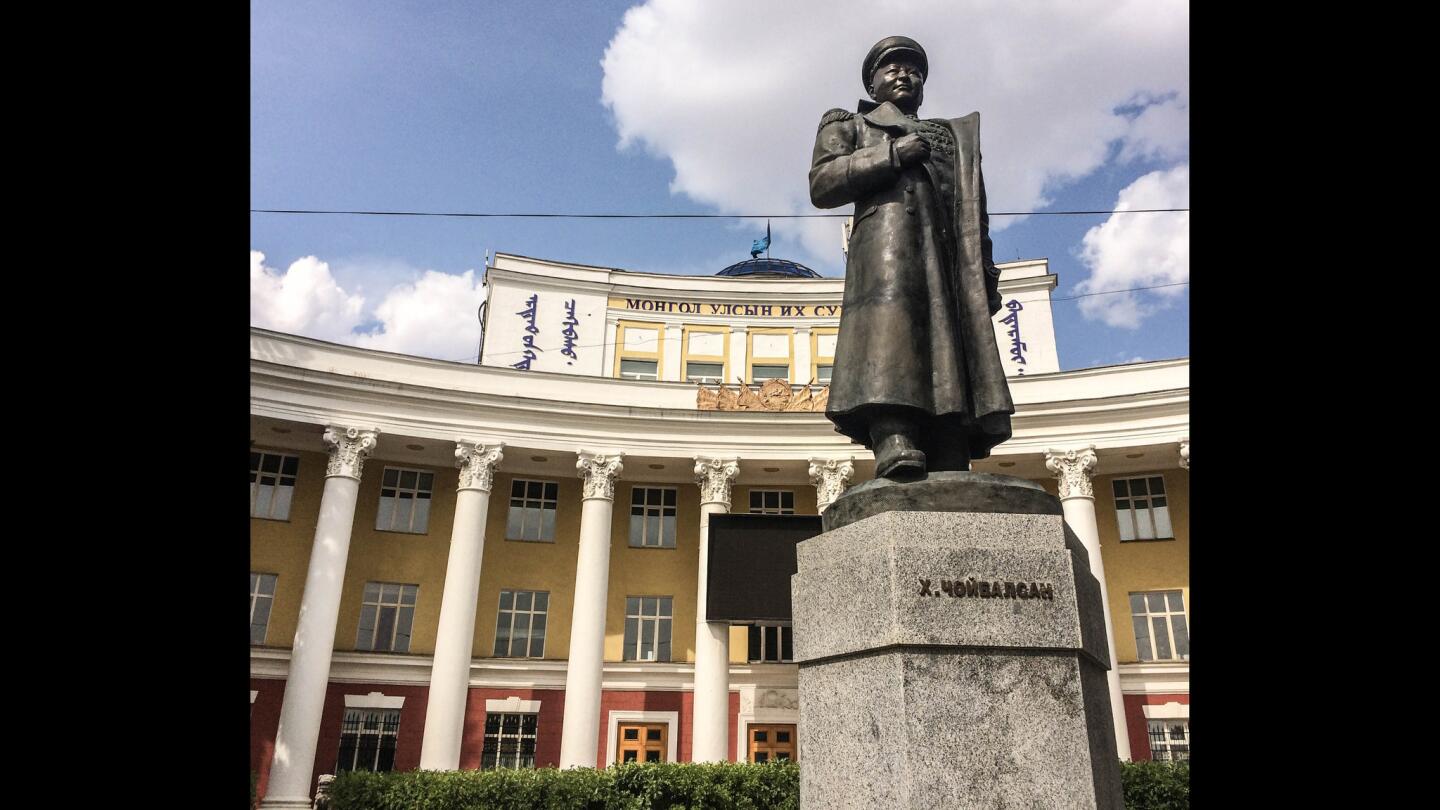
The statue of Mongolian statesman and military leader Khorloogiin Choibalsan (1995-1952) was sculpted in 1946. It was erected at the height of his cult of personality and is the only one in the capital to ever have been dedicated to a living person.
(Julie Makinen / Los Angeles Times)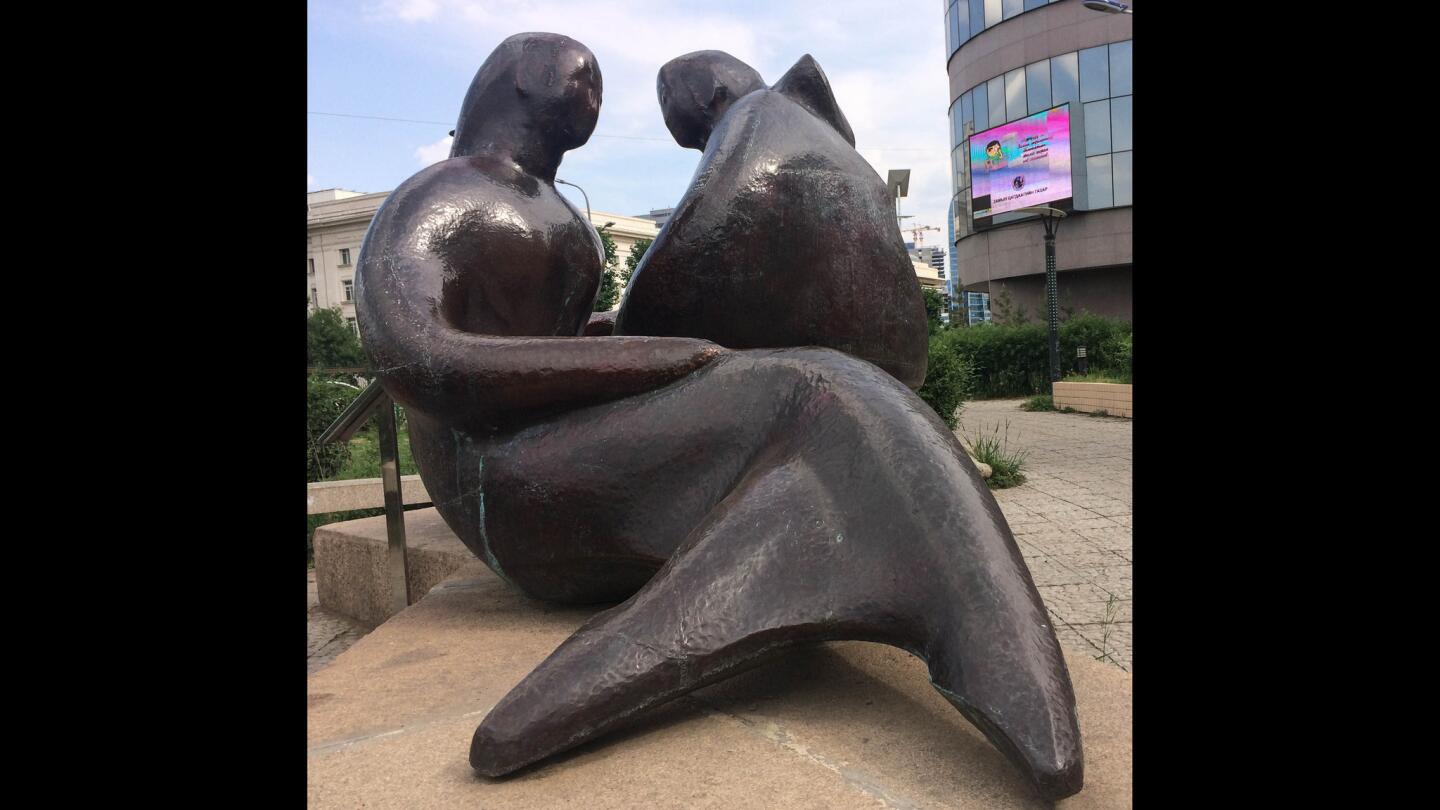
The bronze sculpture cast in 1991 depicts the moment true lovers pledge their lifelong commitment to one another, encouraging all the couples to do the same. It is near the parliament building.
(Julie Makinen / Los Angeles Times)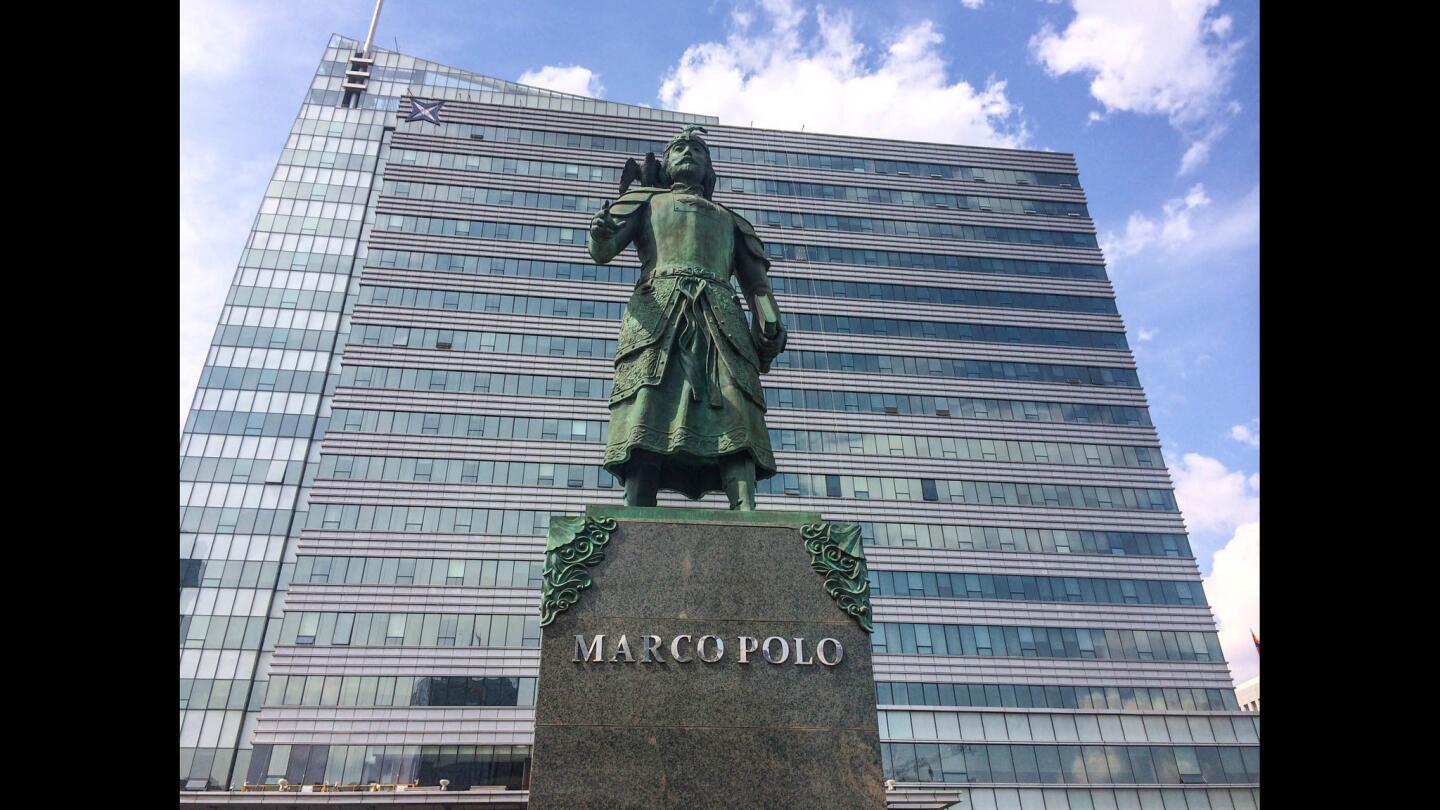
A statue of Marco Polo in front of a high-end shopping building and office tower just east of Ulan Bator’s central square.
(Julie Makinen / Los Angeles Times)Advertisement
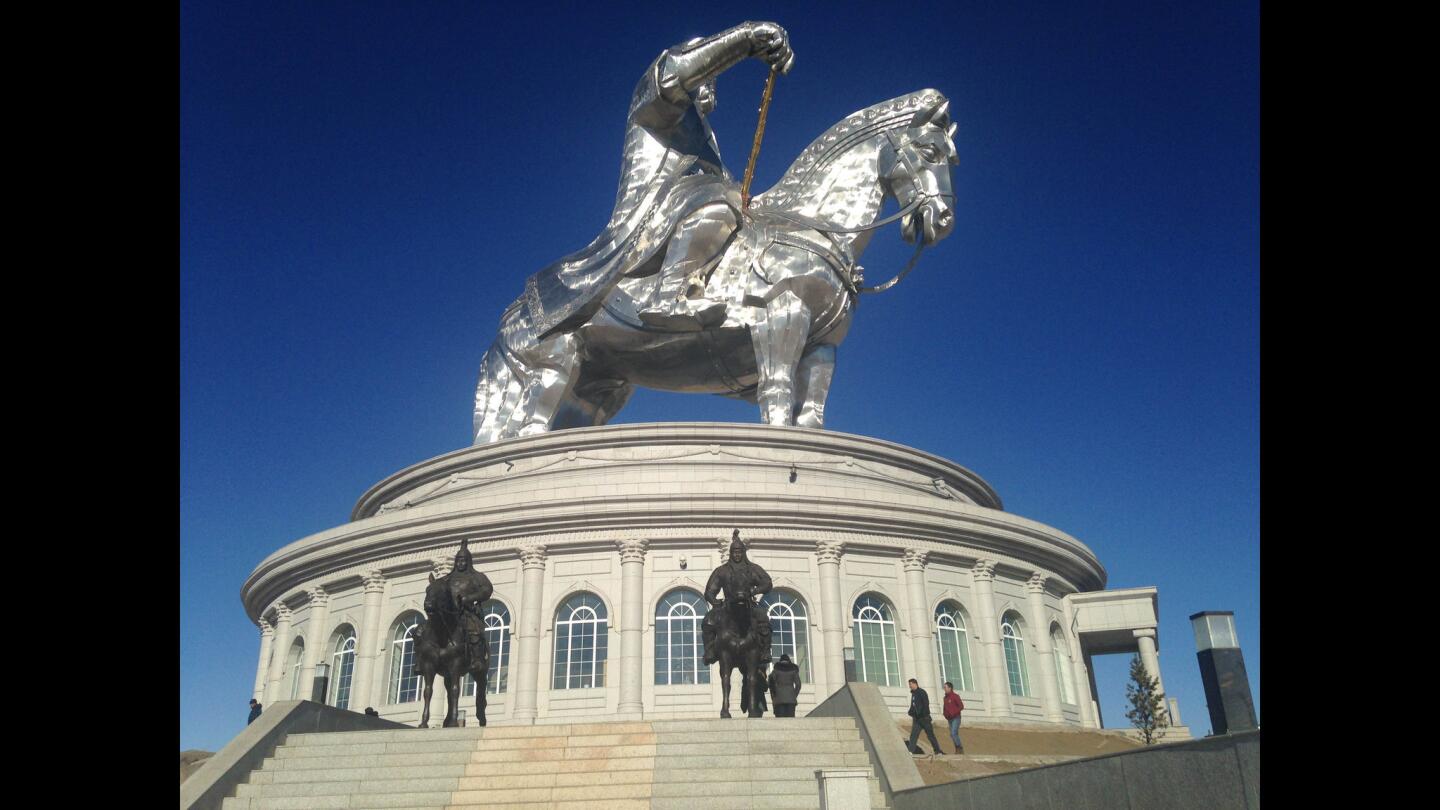
A giant statue of Genghis Khan, 131 feet tall and made of stainless steel, was built out of the sandy steppe in 2009 by a Mongolian tour company. For a fee, visitors can ride an elevator up through the equine’s torso and emerge atop its head to see a panoramic view of the stark landscape.
(Julie Makinen / Los Angeles Times)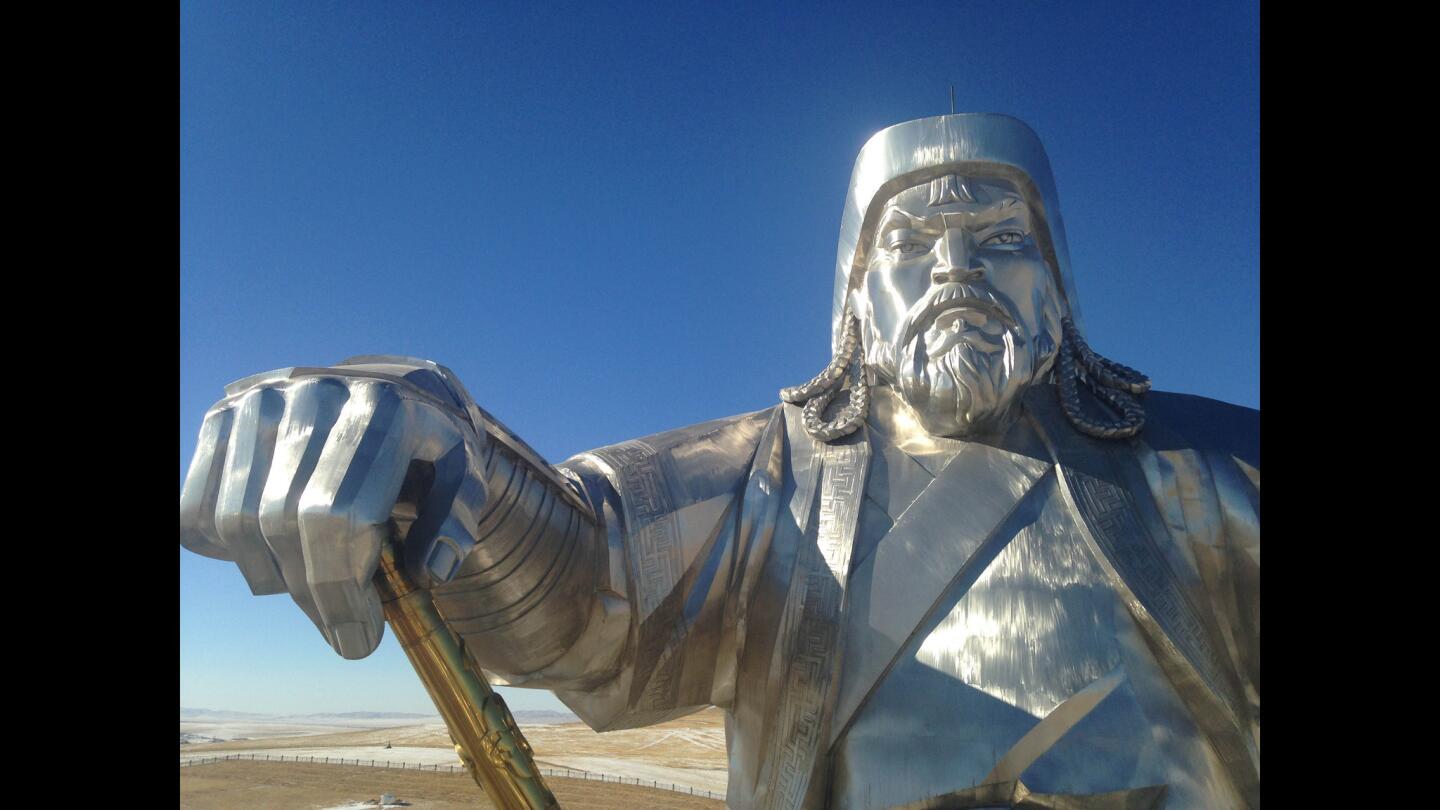
A closer view of the 131-foot, stainless-steel Genghis Khan statue.
(Julie Makinen / Los Angeles Times)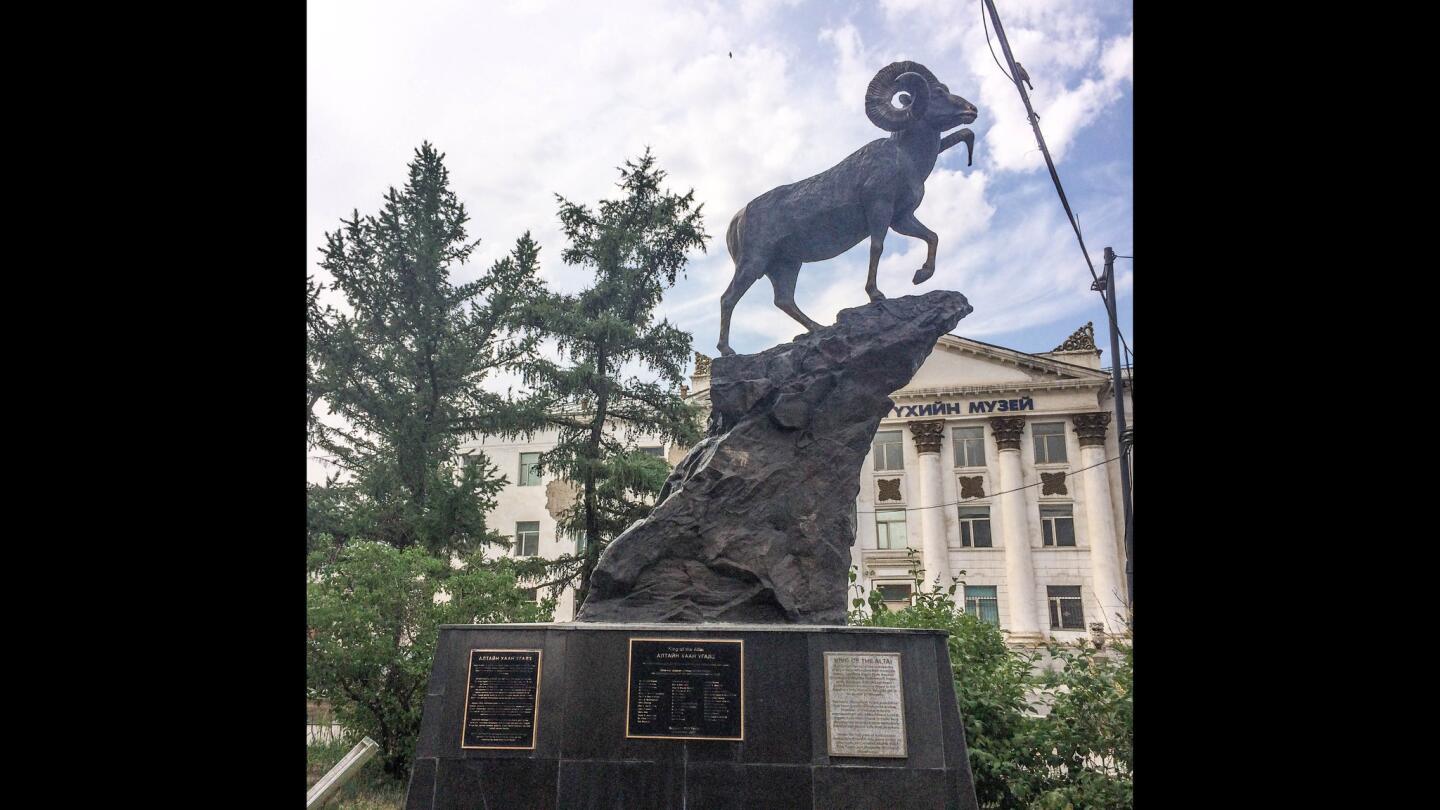
Designed by Rich Tailor, this bighorn statue was presented by Canada to Mongolia in 2006 and is positioned near the parliament building.
(Julie Makinen / Los Angeles Times)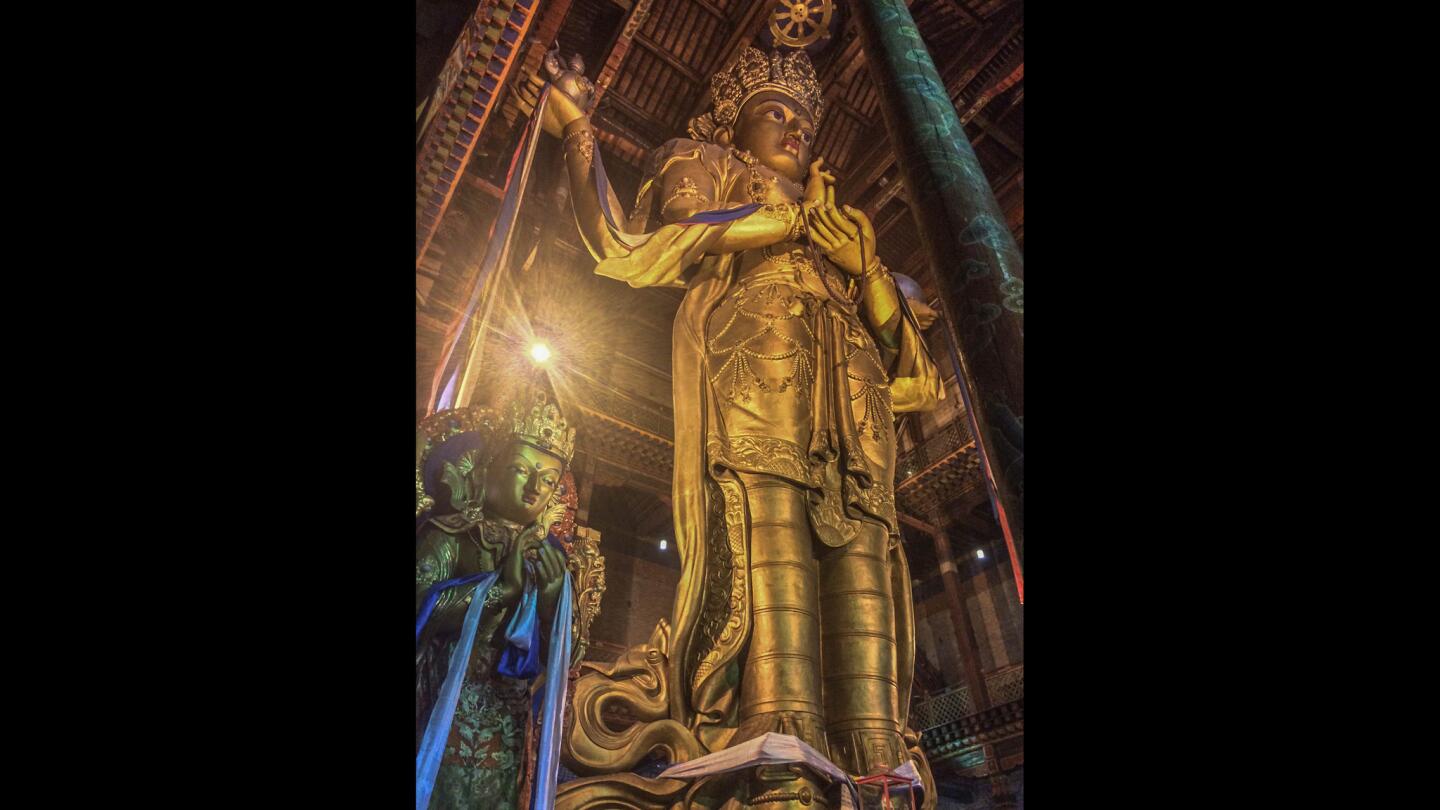
This 87-foot gilt bodhisattva of compassion, Avalokiteshvara, was dedicated at the capital’s Gandan Monastery, replacing the 1911 original that was destroyed by Communists in 1938.
(Julie Makinen / Los Angeles Times)Advertisement
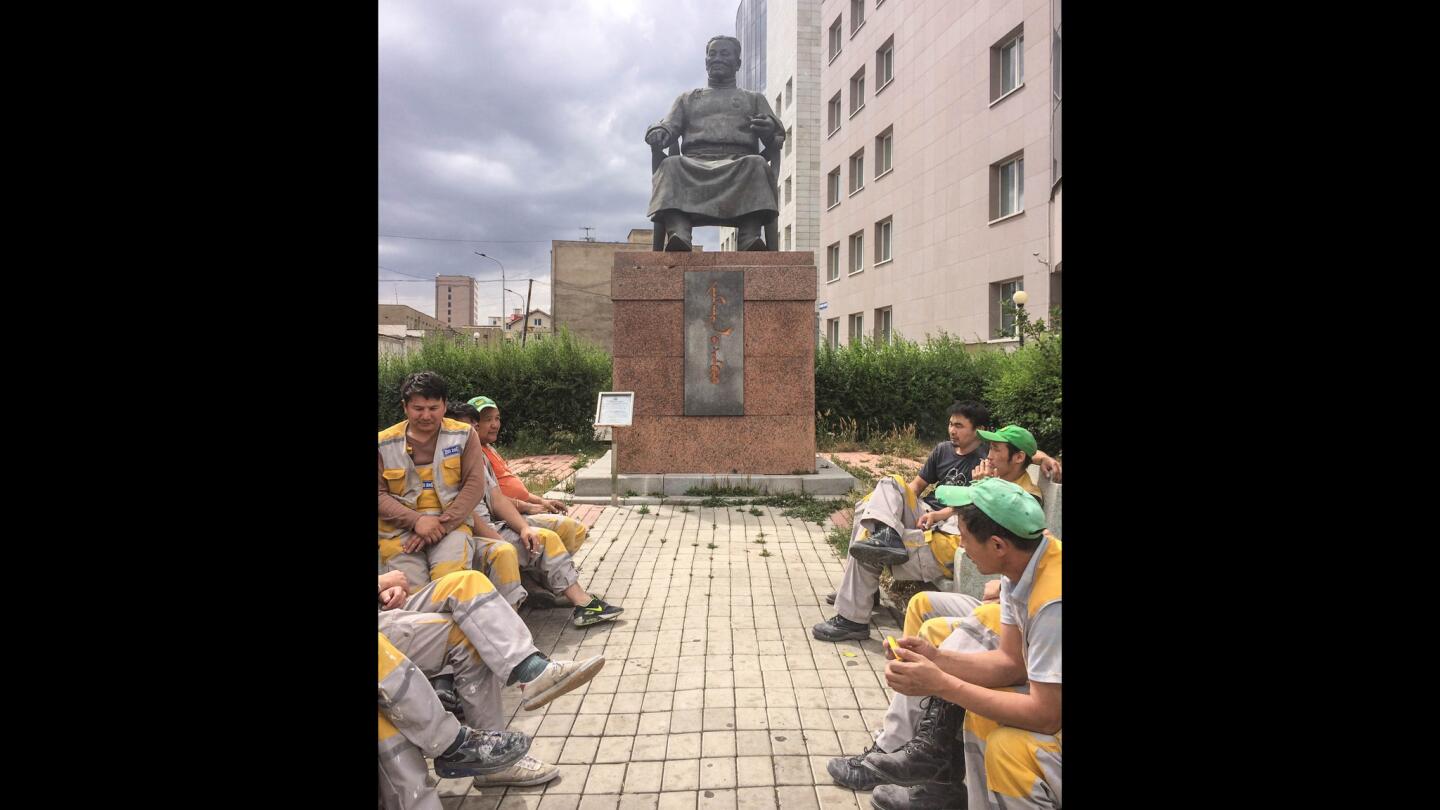
Construction workers take a break in front of Jamsrangiin Sambuu’s statue. He served for 18 years as Mongolia’s head of state.
(Julie Makinen / Los Angeles Times)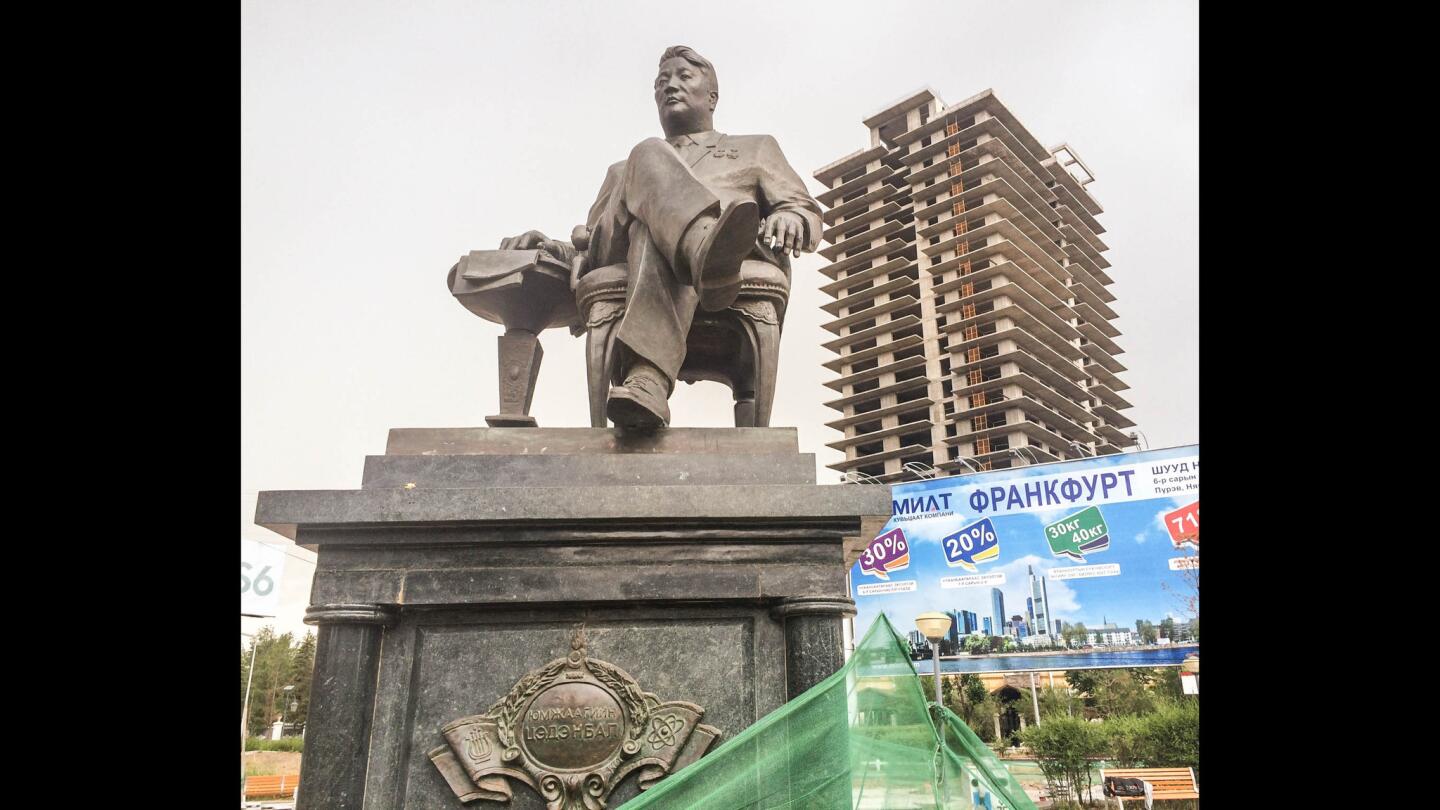
A statue of Yumjaagiin Tsedenbal, built in 2000, stands on the plaza in front of the National Drama Academic Theater in memory of the former head of state.
(Julie Makinen / Los Angeles Times)


